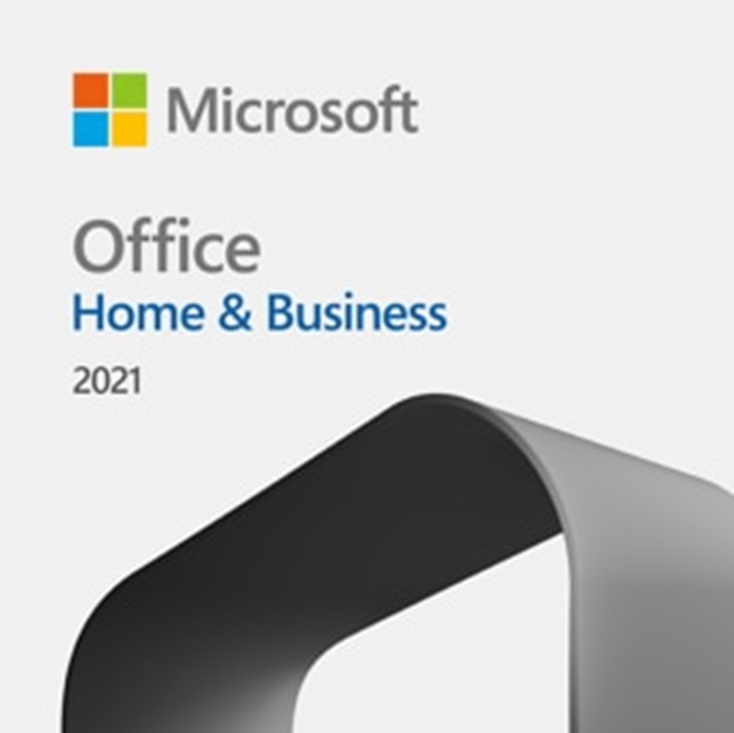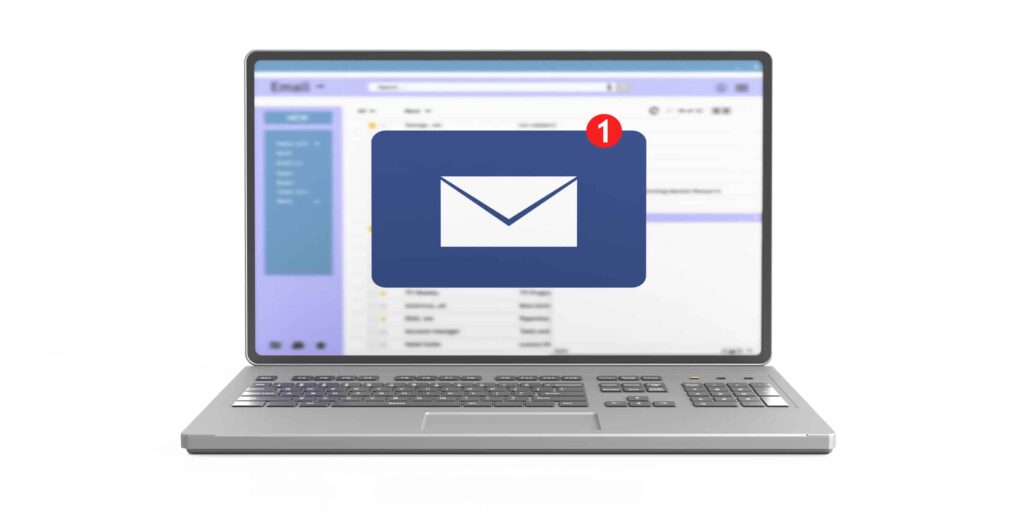
We’ve all been there – hastily clicking “send” on an email, only to instantly regret it. It can be a disaster if you send the wrong email to someone, have someone typing it, or send some sensitive data to the wrong person or recipient. Fortunately, Outlook offers native features to resend sent messages. So, this is a post about how to recall an email in Outlook.
In this handy guide, we’ll cover everything you need to know about recalling emails in the latest version of Outlook. You’ll learn how to undo an email blunder quickly, check if your recall worked, troubleshoot issues, and more. We’ll even share a genius tip to schedule future emails so you can avoid misfires altogether.
So, without further ado, let’s dive in!
Table of Contents
Prerequisite to recall email in Outlook
Some conditions must be checked so that you can recall an email in Outlook 2021. The IT environments are different at various places, so it is important to check the Exchange server setting where the recall email feature lies.
Here’s what you need to recall emails in Outlook
- Microsoft Exchange account – Recalling emails requires an Exchange server and account. Unfortunately, you can’t reverse send with simple POP or IMAP accounts, as those protocols don’t support message recall capabilities. Exchange allows recall through specific server-side rules and permissions.
- Online mode – Your Outlook client must be connected to access the internet and communicate with Exchange. Offline mode prevents any message recalls since there is no server connectivity. As soon as you reconnect, message recall should start working again.
- Access permissions – Admins can restrict permissions for recalling emails through Exchange policies. Users must have adequate rights to leverage the recall capability, which is not enabled by default for all. Check with your organization or IT team to ensure your account has permission for message recall.
In addition to the above requirements, there are a few other factors that can impact the ability to resend sent emails:
- Email forwarding – If the recipient has auto-forwarded your message already, a recall likely will not work.
- Server-side rules – Admins can configure policies restricting recall capabilities after a certain threshold.
- Recipient actions – If the recipient has already opened, replied to, or otherwise acted on the email, you may be unable to recall it.
As long as both boxes are checked and Exchange admins have imposed no restrictions, you can leverage Outlook’s built-in feature to resend messages. Now, let’s see this capability in action!
The steps to recall a sent email are pretty simple. Open the sent email message again, go to the Message tab, and click Recall This Message. A window will pop up confirming your desire to have the email resended. Hit OK, and the recall process will start. Success depends on the factors discussed above.
How to Recall an Email in Outlook and Replace It, If required?
Recalling an email is simple in the latest version of Outlook. If you have a question – about how to recall an email in Outlook 2021, here is the answer. Just open the sent message you want to revoke, click “Actions” > “Recall This Message,” then choose to delete or replace the email.
Detailed steps
1. In Outlook 2021, open the Sent Items folder to locate previously transmitted messages. This stores copies of all emails you have sent from your account.
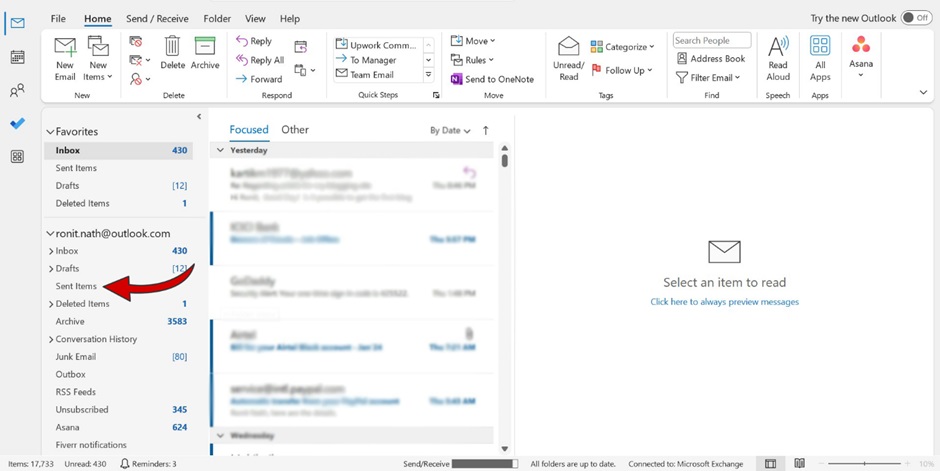
2. Double-click the email you wish to recall. This opens the message in its window.
3. Select “More Move Actions” from the top toolbar menu. This drop-down menu contains functionality like Edit Message, View in Browser, Resend This Message, and Recall.
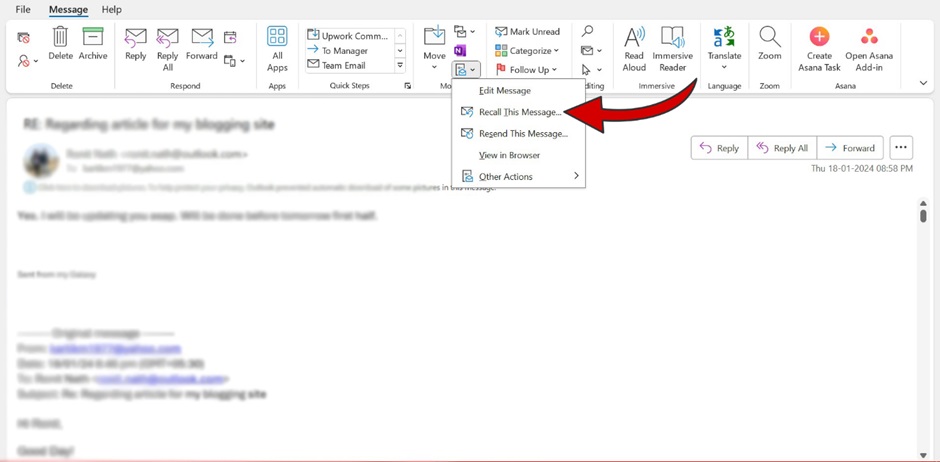
4. Choose “Recall This Message” from the drop-down options. This initiates the recall process.
5. A prompt gives two choices:
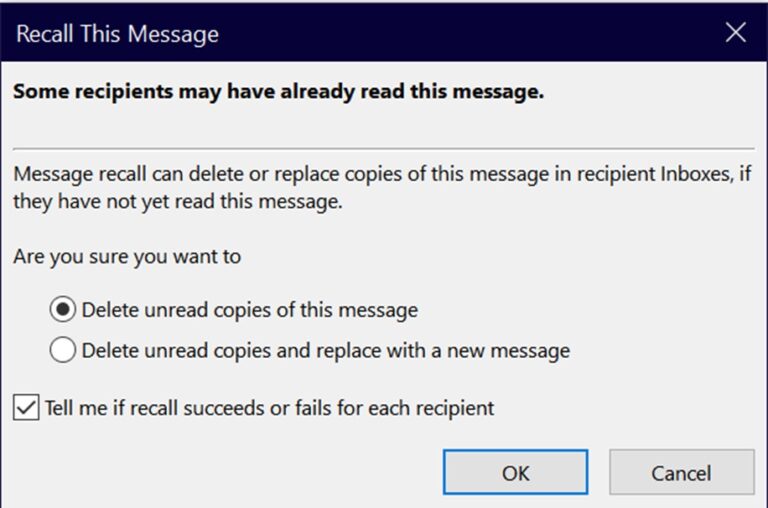
- Delete unread copies of this message – Immediately delete the sent email if recipients haven’t opened it. No replacement message can be sent since the original is removed.
- Delete unread copies and replace them with a new message – It withdraws the sent message if unopened and allows sending an edited or new email instead.
- Delete unread copies of this message – Immediately delete the sent email if recipients haven’t opened it. No replacement message can be sent since the original is removed.
6. Select the appropriate recall option for your purpose. If you need to resend the message, choose option 1. But if you want to resend a modified communication, select option 2.
7. If you replace the message, a new email form opens with the previous pre-populated content. Make any edits to the subject, body, or attachments required. You can overhaul the entire content or tweak parts as needed.
8. Click “Send” when ready to deliver the replacement message. The new email will be transmitted to all the original recipients.
A few things to note about message recall
- It only works if the recipient has not already opened the email. Once opened, a recall cannot delete the message from their inbox.
- Replacement emails may have slightly different timestamps or message IDs than the original.
- There is no guarantee recipients will read the updated message if you send a replacement.
- Deleted messages get moved to the Deleted Items folder before permanent removal.
And that’s all there is to it! Outlook quickly processes the recall message and replacement request in the background and lets senders resend slip-ups or resend updated communications easily. Just be aware of the limitations compared to regular emails.
How to Delay Your Emails?
Accidentally hitting “send” too soon is one common reason people recall emails in Outlook. However, there’s an even better way to avoid such misfires – scheduling your messages!
Outlook includes a Delay Delivery option that queues up emails to be sent at specific times in the future. Just set the ideal date and time while composing the message, and Outlook handles the rest automatically.
Here’s how to schedule emails in Outlook
1. In the New Email window, craft your message as usual.
2. Click the “Delay Delivery” tab under the “Options” menu.
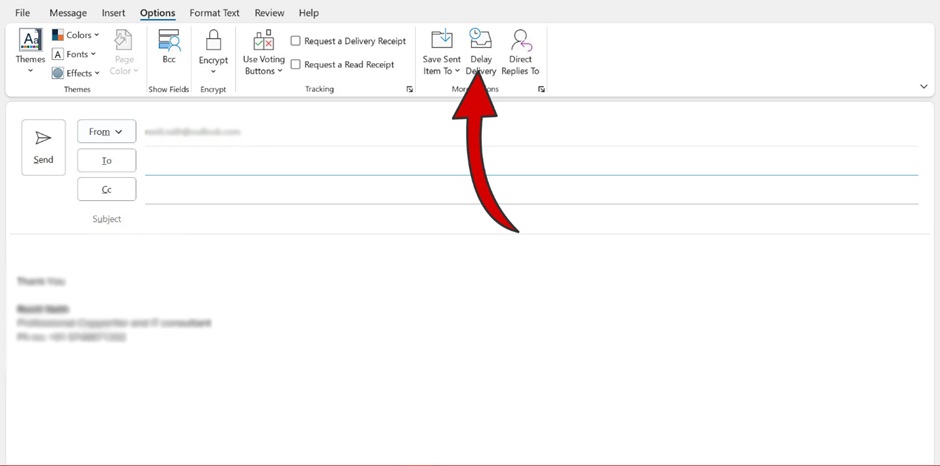
3. Check the box next to “Do not deliver before.”
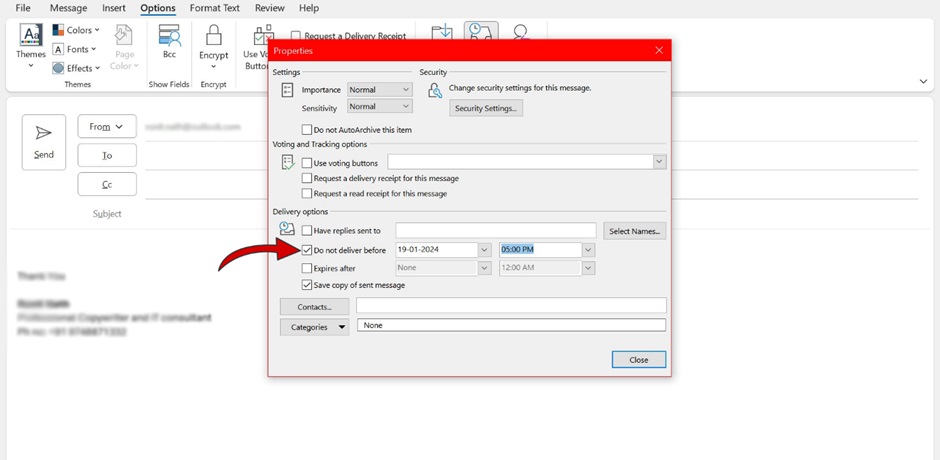
4. Select the date and time to email using the adjacent calendar and clock icons.
5. Finish composing your message, then hit “Send.”
The email is stored in your Outbox folder until the specified delivery time. Pretty neat!
For detail guide on scheduling the email in outlook you can refer How to Schedule an Email in Outlook
So next time you find yourself hastily drafting emails, take advantage of Delay Delivery. You avoid embarrassing recalls later and present a more thoughtful, professional tone.
Why Does My Email Recall Not Work?
Despite Outlook’s reliable recall capabilities, you may sometimes encounter issues withdrawing messages. Some common reasons an email recall fails include:
- Recipients already read the email. Opened email messages can’t be recalled in Outlook. Withdrawals only work on unopened emails.
- The time limit has expired. Admins often set a short 2-10 minute window after sending when emails can be recalled. Beyond that, revokes fail.
- Recipient using webmail or POP/IMAP – The recall function requires the advanced capabilities of Exchange and Outlook. If recipients access emails another way, withdrawals may not propagate.
- Sync issues – Glitches with Outlook connectivity, offline mode errors, and disruption between Exchange and other mail servers can all affect recalls.
So before trying to resend an email, check if recipients use Outlook/Exchange, know admin time limits, and confirm your uninterrupted online connectivity first. This maximizes success in recalling sent messages. Even with ideal conditions, email recalls can fail unexpectedly due to quirks in Outlook or Exchange. Please don’t rely on them as a foolproof safeguard.
Additional common triggers making recalls unsuccessful include messages with large attachments, recipients immediately forwarding an email before opening, IT policy restrictions, and delays propagating withdrawal requests between servers. Microsoft support articles provide more technical reasons why recalls may not process correctly despite appearing to send properly on both the original message sender’s end initially.
In summary, many unpredictable factors impact whether an email withdraws after being sent through Outlook. Verify recipients use compatible email platforms, check IT time limits, ensure stable connectivity, and don’t expect 100% guaranteed results.
Recalls help in some situations but aren’t universally reliable. Set proper expectations when attempting to revoke delivered messages, and always carefully review content before clicking send in the first place. Precision and caution in submitting emails eliminate the later need to try precarious recalls.
Recalling a Message in Outlook on the Web
The full-featured Outlook desktop app offers advanced controls like email recall that aren’t mirrored in the Web’s stripped-down Outlook. However, webmail isn’t completely helpless if you accidentally send something too soon.
Outlook on the Web allows users to “Undo Send” within 10 seconds of email transmission. Here’s what to do:
- When you mistakenly hit send, look for a brief “Undo” prompt at the top of the webmail interface.
- Rapidly click the “Undo Send” link within 10 seconds.
- The email gets withdrawn from recipients if they haven’t opened. You can then safely edit any mistakes.
So, while less robust than the desktop equivalent, Undo Send offers a quick second chance if you instantly notice an email slip-up in your Outlook email or on the Web.
Just remember that lightning-fast 10-second window!
Recalling an Email on Exchange Online
The classic email recall feature in Outlook had several limitations that reduced its effectiveness.
- First, it relied on the Outlook client being open on the recipient’s machine to process the recall. This meant other email clients could not have messages recalled from them.
- It could only recall unread messages from the Inbox folder. Read messages, and those in other folders could not be recalled.
- Senders received individual notification emails for each recall attempt, sometimes amounting to hundreds of emails.
The upgraded feature and its benefits:
- The new Exchange Online message recall feature addresses these pain points. As it functions directly in the cloud mailbox, messages can now be recalled regardless of the email client used by the recipient. Whether the recipient uses Outlook, OWA, or any other client that connects to Exchange Online, any message in the mailbox is eligible for recall.
- Additionally, the recall now works on read messages and those in any mailbox folder or sub-folder, except Drafts and Sent Items. This expands the scope of recall to post messages in the mailbox. It is no longer limited to only unread messages in the inbox.
- Finally, the multiple recall notification emails have been replaced by a single status report email. This report contains a link to view the aggregate status of the recall attempt for all recipients. The status is quickly updated, providing senders timely feedback on their recall effort. For large recalls, it may take up to 30 minutes to retrieve full status across tens of thousands of recipients.
- By moving recall handling into Exchange Online itself, Microsoft has addressed key limitations in effectiveness and usability. Any client can connect to the mailbox, most messages are eligible thanks to expanded scope, and a centralized report provides clear status without spamming the sender. The new message recall capability is a major upgrade over the previous client-based feature.
Conclusion
And that’s a wrap, folks! This riveting tutorial covered everything from properly recalling emails in Outlook to proactively delaying deliveries and troubleshooting pesky issues when your magic recall powers fail. Feel free to resend any early drafts we may have accidentally sent while making this delightful guide! Just kidding—unsend isn’t an option when finalizing publish-ready content. But hopefully, all these tips and tricks help you avoid unpleasant emailing snafus in the future and gracefully clean things up if you ever need to retract messages
Frequently Asked Questions (FAQs)
Here are answers to some frequently asked questions about recalling sent emails:
Can you recall an email after 30 minutes?
Unfortunately, there is no set recall timer on Outlook emails. The sooner you attempt to recall a message, the higher your chance of success. After 5-10 minutes, your email may get shuffled down in the recipient’s inbox or sent to another folder, becoming irretrievable. Act fast for the best results!
The recall capability relies on multiple factors – whether the recipient has opened the email, server-side retention policies, administrator permissions, etc. So, while 30 minutes may sometimes work, it’s likely too long of a delay. For best practice, attempt recalling within 1-2 minutes of the original send.
Does the recalled email notify the recipient?
No, if you successfully recall an email before the recipient opens it, they receive no notification. The original message vanishes from their inbox without a trace. However, if the recipient has opened the email, they will receive a recall notice even though the original content disappears.
This notice usually states, “The sender recalled the message” or something similar. So recipients know something went away, though they won’t have access to view it again. Only unopened emails get recalled without any observed action.
Can you recall an email after delivery?
You cannot recall an email if the recipient opened it and clicked on the message content. At that point, your magical recall powers fade away. The open notification gets sent back to the server, preventing any message withdrawal.
However, emails marked “delivered” but not yet opened are still fair game! Delivery means the message arrived in the recipient email client’s inbox on the server. So act fast while the email sits unopened to make that misfired message disappear!
Can you recall an email after 1 hour?
It’s doubtful a recall will work after a whole 60 minutes. The longer an email lingers, the more likely the recipient’s mailbox will notice and open the message, or autosort will shuffle it into another folder. Both actions prevent a clean recall.
For best success rates, attempt recalling within 1-2 minutes of the original send before too much inbox processing occurs. The first 5-10 minutes at maximum is your window; after that, recall capability declines steeply. Don’t count on resending messages after an hour.
Is there any way to permanently destroy all evidence after a recall?
Alas, your recall magic has limitations! Even if you successfully resend an email from the recipient’s inbox, administrators could access a copy on Exchange server logs. Messages are never entirely erased, just hidden or withdrawn to limited extents.

